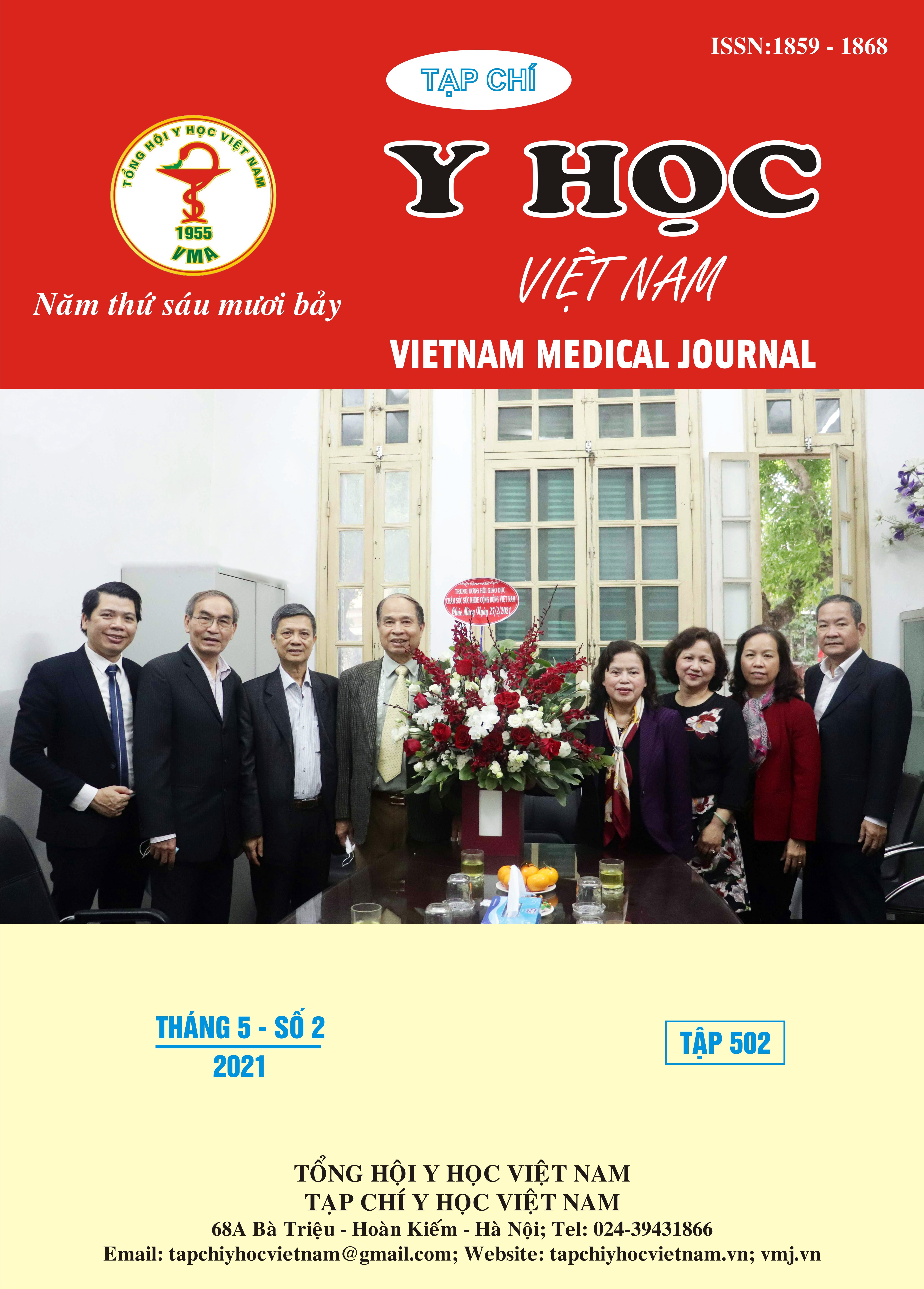POST-TRANSPLANT VIRUS INFECTION STATUS AND IMPLICATIONS FOR NEW-ONSET DIABETES AFTER KIDNEY TRANSPLANTATION
Main Article Content
Abstract
Objectives: Analysis of infection incidence of some viruses and the association with new-onset diabetes after renal transplantation (NODAT) in subjects three months post-transplantation. Subjects and methods: ncluding 508 patients with kidney post-transplant more than three months who are followed up and treated at Viet Duc University Hospital from September 2017 to April 2018. All patients volunteered to participate in the study. Collect blood and urine in the morning before eating and taking immunosuppressants. Using Realtime PCR to detect the presence of hepatitis B virus (HBV), hepatitis C virus (HCV), cytomegalovirus (CMV), and BK polyomavirus ( BK) in the patient's blood; BK virus is also assessed for the presence in the urine. Patients were diagnosed with new-onset diabetes after renal transplantation based on the American Diabetes Association (ADA). Results: n 508 subjects, in blood, there were: 28/436 patients (6.42%) positive for HBV-DNA; 24/444 (5.54%) positive for HCV-RNA; 35/395 (8.86%) patients positive for CMV; 30/493 (6.09%) patients positive for BK; In urine 150/500 (30%) patients positive for BK; 40/508 (7.87%) patients were co-infected with at least two viruses. There is no difference in the rates of NODAT between those infected with the viruses and those who are not infected. Conclusion: The results of this study provide data on infection rates of HBV, HCV, CMV and BK viruses in a large number of subjects and show no association with NODAT in recipients three months after kidney transplantation.
Article Details
Keywords
post-transplant virus infection, new-onset diabetes after renal transplantation
References
2. Ashton-Chess, J., et al., Can immune monitoring help to minimize immunosuppression in kidney transplantation? Transpl Int, 2009. 22(1): p. 110-9.
3. Kasiske, B.L., et al., Diabetes mellitus after kidney transplantation in the United States. Am J Transplant, 2003. 3(2): p. 178-85.
4. Kamar, N., et al., Evidence that clearance of hepatitis C virus RNA after alpha-interferon therapy in dialysis patients is sustained after renal transplantation. J Am Soc Nephrol, 2003. 14(8): p. 2092-8.
5. Joshi, N., et al., Infections in patients with diabetes mellitus. N Engl J Med, 1999. 341(25): p. 1906-12.
6. Muller, L.M., et al., Increased risk of common infections in patients with type 1 and type 2 diabetes mellitus. Clin Infect Dis, 2005. 41(3): p. 281-8.
7. Kornum, J.B., et al., Diabetes, glycemic control, and risk of hospitalization with pneumonia: a population-based case-control study. Diabetes Care, 2008. 31(8): p. 1541-5.
8. Davidson, J., et al., New-onset diabetes after transplantation: 2003 International consensus guidelines. Proceedings of an international expert panel meeting. Barcelona, Spain, 19 February 2003. Transplantation, 2003. 75(10 Suppl): p. Ss3-24.


